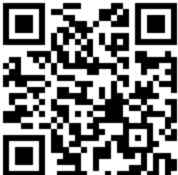QR Codes and AR: Bringing Digital Branding to Retail and Private Settings

By Eitan Miller, Founder and Director of Boundless Creative, a boutique full-service NYC-based commercial production company helping businesses elevate brands through video.
Over the past few years, the usage of QR codes has increased dramatically across industries. Coinbase’s Superbowl ad of a QR code floating on the screen with no additional text or information led to over 20 million scans by curious consumers who wanted to know what the ad was for.
The alcohol industry is using QR codes as well. Link management company Bitly told CNBC that QR code downloads have increased 750 percent in the past 18 months for restaurants alone. Consumers familiarity with QR codes in the restaurant setting make it a great way to share information about your bottle in retail or private settings. Numerous alcohol brands are taking advantage of the tool, most commonly linking to their websites, which provide far more information and branding than can fit on a label.
Dynamic QR Codes
Unlike Static QR Codes which cannot be changed once created, Dynamic QR Codes allow the hyperlink to be adjusted at any time, in addition to enabling analytics collection about the QR code usage. This is a great way to take advantage of changing marketing promotions, including seasonal advertising. While most QR codes direct towards a website or a social media channel, some brands are getting creative with their usage.
One creative example is Stella Artois’ QR Codes early in the Covid pandemic which allowed consumers to donate to a nonprofit supporting chefs and others in the culinary industry through Venmo. Another brand heavily using QR codes is Haus, which links to cocktail recipes, playlists, and information on their website about the bottle.
Some QR codes offer expanded capabilities, including multi-URL QR Codes. These can send users to different links based on location. For example, consumers in France could get a French page, whereas consumers in America could get an English version. Additionally, it is possible to attach an image in the center to brand the QR code.

AR
QR codes aren’t the only way to bring digital experience to the physical world. After consumers download an app, they can point their phone at 19 Crimes Wine to see and hear the histories of interesting convicts depicted on the bottle. This is an example of Augmented Reality, which adds virtual components to physical items through a camera.
One challenge with this system right now is that it involves a separate app download. Currently, consumers are more likely to use a QR code they can simply scan with their phone cameras than one that requires the additional step of downloading an app. That said, AR will be an interesting branding tool to follow as smartphone technology and infrastructure progresses.
What’s Next?
One overarching theme is the merging of the physical world with the virtual world. Across industries, retail stores are incorporating technology to take advantage of the accessibility of information and branding opportunities. Especially as more Gen Z consumers begin purchasing wine, using technology as a brand differentiator is a great way to stand out in a crowded market and offer added value to consumers.
I run a commercial video production company in NYC, and I’ve seen a huge increase in video content across industries. Video content is typically more engaging than just a link to a website, so in the future we’ll see more and more alcohol bottles including QR codes that link to videos. These videos can fulfill different goals, from fun cocktail recipes linked on spirit bottles to virtual wine tastings where consumers can watch experts discuss a bottle of wine – either at the store while making a purchasing decision or later on in their homes. This democratizes information historically reserved for tasting events which many wine consumers (especially Gen Z and millennials) do not attend, even if they’re curious about the wine.
Videos linked from QR codes don’t require a separate app like Augmented Reality, but provide a more personal touch than a QR Code that simply links to a website. QR codes are a great way to merge the digital world with the physical world and enrich the consumer experience with the products.